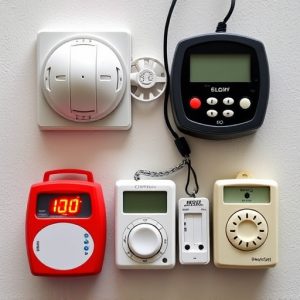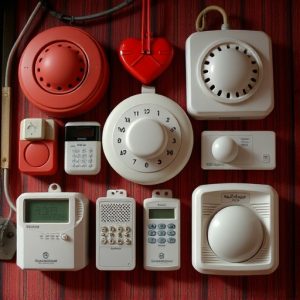Personal Protection Devices with Audible Alarms: Enhancing Safety Through Sound Penetration Walls
Personal Protection Devices (PPDs) with powerful audible alarms are gaining popularity as top-priori…….
Personal Protection Devices (PPDs) with powerful audible alarms are gaining popularity as top-priority personal safety tools, especially in urban and remote areas. These devices act as effective deterrents against threats, providing an extra layer of security. The key to their success is the ability to produce loud alarm sounds that penetrate walls and barriers, quickly drawing attention and alerting others for help. High-decibel alarms with strong outdoor projection can maximize personal security by alerting neighbors, deterring attackers, and providing crucial time for escape or assistance. Strategic placement near windows or exits and real-world testing further enhance safety measures. Investing in these devices ensures that your alarm sound effectively reaches beyond indoor barriers.
Personal protection devices equipped with audible alarms have become indispensable tools in today’s fast-paced world, offering individuals a sense of security and peace of mind. As awareness of personal safety grows, so does the demand for effective solutions. This article delves into the significance of these devices, exploring their key feature: powerful, piercing alarm sounds capable of penetrating walls to alert nearby neighbors or authorities in emergencies. Understanding how these alarms function and their proven effectiveness can empower individuals to make informed choices for their safety.
- Understanding Personal Protection Devices: Why They're Essential in Today's World
- The Power of Audible Alarms: How They Work and Their Effectiveness
- Exploring Personal Alarm Sound Penetration Walls: Enhancing Safety Measures
Understanding Personal Protection Devices: Why They're Essential in Today's World
In today’s world, personal safety is a paramount concern for individuals across various demographics. This heightened awareness has led to the development and growing popularity of Personal Protection Devices (PPDs) equipped with audible alarms. These devices serve as a powerful deterrent against potential threats, offering users an extra layer of security in both urban and remote settings.
The effectiveness of PPDs lies in their ability to generate loud, attention-grabbing alarm sounds that can penetrate walls and other barriers. This feature ensures that help is swiftly drawn even if the user finds themselves trapped or unable to call for assistance directly. Whether it’s a personal safety pen with an integrated alarm or more robust self-defense tools, these devices empower individuals to protect themselves in unexpected situations.
The Power of Audible Alarms: How They Work and Their Effectiveness
Audible alarms in personal protection devices have proven to be powerful tools for self-defence, offering a unique approach to deterring potential threats. These devices emit high-decibel sounds that can penetrate walls and attract attention quickly. The primary function of an audible alarm is to startle and alert individuals or authorities in distress, providing crucial time to escape or summon help.
The effectiveness of personal alarm sound penetration walls lies in its ability to disrupt a potential attacker’s focus and create a momentary confusion. With sounds ranging from piercing whistles to blaring sirens, these alarms can travel through solid structures, ensuring that the distress signal reaches those nearby who might be able to provide assistance or intervene. This feature is particularly useful in crowded places or for individuals who may be temporarily isolated, giving them a powerful means of self-protection.
Exploring Personal Alarm Sound Penetration Walls: Enhancing Safety Measures
Personal alarm sound penetration walls is a crucial aspect often overlooked in personal protection strategies. When considering devices for self-defense, understanding how far and clearly the alarm can be heard is essential for effective deterrence and assistance. The ability of a personal alarm to penetrate walls varies based on factors like decibel level, frequency, and the type of construction. High-decibel alarms with a range that extends beyond indoor barriers can alert neighbors, deter potential attackers, and provide critical time for escape or help to arrive.
Enhanced safety measures involve selecting alarms designed for maximum outdoor projection, considering placement strategies near windows or exits, and ensuring proper testing under conditions mimicking real-world scenarios. By exploring these aspects, individuals can make informed choices that go beyond mere aesthetics, investing in devices that truly enhance personal security by maximizing the effectiveness of their alarm sounds across all potential barriers.


